#Elizabeth Sparhawk-Jones
Text
Finally I'm able share some good news
Wild festivals, exquisite fruit-bowls and unusually realistic renderings of motherhood and female friendship – not to mention a glimpse of Lady Hamilton as an enthusiastic follower of Bacchus – will go on show in Madrid on Tuesday as one of the country’s most famous galleries seeks to spike the patriarchal canon of art history with a new, and avowedly feminist, exhibition.
The show at the Thyssen-Bornemisza – called simply Maestras (Women Masters) – uses almost 100 paintings, lithographs and sculptures to show how female artists from the late 16th to the early 20th centuries won recognition in their own lifetimes, only to find their works forgotten, erased or consigned to dusty storerooms.
Organised into eight chronological sections that reflect artistic and social changes, Maestras also explores how female artists, gallerists and patrons worked together to create and celebrate art while living and working in the grip and gaze of sexist, and often misogynistic, societies.

Elizabeth Sparhawk-Jones, The Shoe Shop, 1911. Photograph: Elyse Allen/© Art Resource, New York Scala, Florence
Seventeenth-century works by Artemisia Gentileschi, Fede Galizia and Elisabetta Sirani give way to still lifes of fruit and flowers before the exhibition moves to portraits – including Élisabeth Louise Vigeé Le Brun’s Lady Hamilton as a Bacchante – and then to Orientalism, depictions of working women, images of maternity, sisterhood and, finally, to images of female emancipation.
Among the show’s early exhibits is one of Gentileschi’s anguished studies of Susanna and the Elders, while the later pieces include Mary Cassatt’s bleary-eyed Breakfast in Bed and Maruja Mallo’s playful Fair pictures.
“This exhibition speaks positively of that other half of art history,” said the exhibition’s curator, the art historian and critic Rocío de la Villa.
“For a long time, the feminist history of art has been beset by all the handicaps and obstacles that had been put in the path of female creators. For example, they couldn’t access the same artistic training that their male colleagues could. They generally lived in an extremely patriarchal system that denied them their rights and in which their signatures had no legal value.”
There were, however, “certain moments and certain places” in which conditions were more favourable to female artists, and the show aims to offer “a series of windows through which we can see a mutual understanding and a camaraderie between artists, gallery owners and patrons”.
It also reminds visitors that some talented women caught the eye of European royal courts, and that some had husbands who helped them in the studio – or even looked after their children – because they knew that their wives’ gifts far exceeded their own.
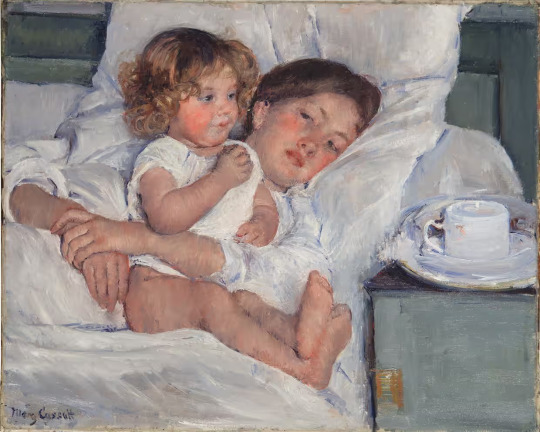
Mary Cassatt, Breakfast in Bed, 1897. Photograph: The Huntington Library, Art Museum
Guillermo Solana, the artistic director of the Thyssen-Bornemisza, said Maestras was another example of the museum’s continuing commitment to feminism, education and addressing the prejudices of the past.
“I’d promised myself that I wouldn’t do any mansplaining today but I can’t help it when it comes to explaining what I’ve learned from the process of doing this exhibition, because I’ve learned a lot,” he told journalists on Monday morning.
“The first thing I learned from this exhibition – and which I think the public will also learn – was so many new names; so many fantastic artists I’d had no idea about and had never heard of. Of course, we knew about Artemisia Gentileschi and Frida Kahlo or Paula Modersohn-Becker, but how many important artists have got away – or been taken from us?”
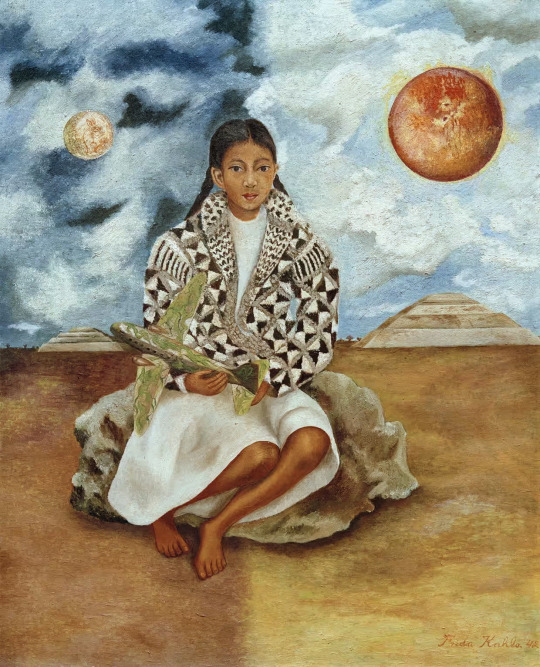
Frida Kahlo, Portrait of Lucha María, A Girl from Tehuacán, 1942. Photograph: akg-images/© Rafael Doniz @ 2023 Banco de México Diego Rivera Frida Kahlo Museums Trust, México, D.F./VEGAP
De la Villa agreed. “The public is going to ask, ‘How can it be that we didn’t know about these female artists?’” she said.
“How is it that their works were in storerooms until recently? Maestras is a feminist exhibition that seeks to emphatically correct the prejudices that have come about as a result of the patriarchy – prejudices that have meant that works by female artists have remained in museum storerooms during the 20th century.”
She said the male-dominated artistic system had always sought to defend itself by denigrating female artists. Equally damaging, she added, was how historians had played down the achievements of women until their voices were silenced and their creations overlooked and then hidden from view.
“When women are hidden, or robbed of their past, they are robbed of their identity,” said De la Villa. “The power of culture is very important. It just can’t be separated from the social conditions we enjoy, or which we suffer.”
Maestras is at the Thyssen-Bornemisza museum from 31 October to 4 February 2024
#Spain#Madrid#the Thyssen-Bornemisza#Maestras (Women Masters)#Elizabeth Sparhawk-Jones#mary cassatt#frida kahlo#October 31st to February 4th 2024
108 notes
·
View notes
Text

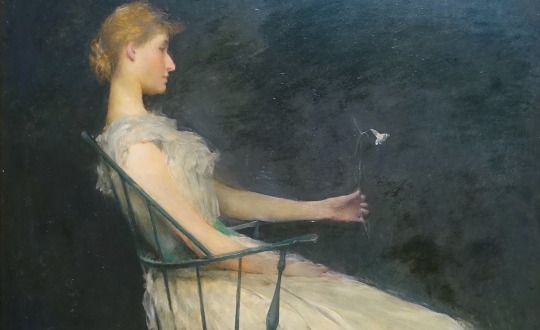


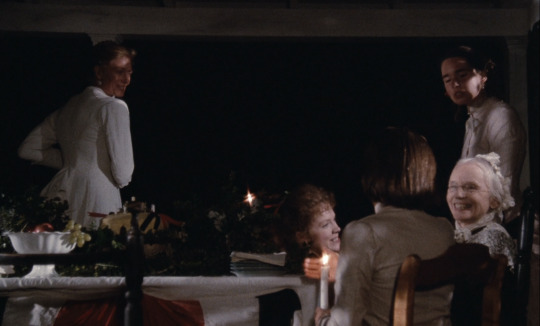

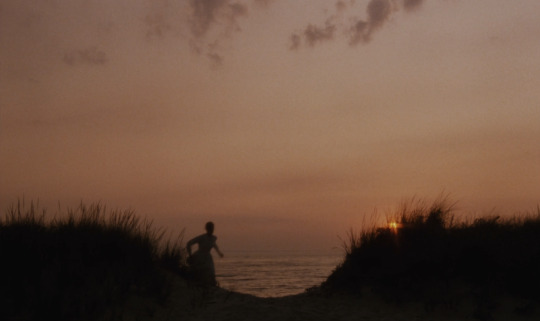

The Bostonians (1984) dir. James Ivory
The Carnation (detail), Thomas Wilmer Dewing, 1893
Two Girls on a Lawn (detail), John Singer Sargent, ca. 1889
The Porch (detail), Elizabeth Sparhawk-Jones, 1907
Sand Dunes (detail), Laura Coombs Hill, 1890s
#no doubt someone else could do much better at this but the heart wants to post what it wants to post i suppose#the bostonians#james ivory#vanessa redgrave#parallels#m#*#Thomas Wilmer Dewing#John Singer Sargent#Elizabeth Sparhawk-Jones#Laura Coombs Hill#oh also the laura coombs hill is from a book on Boston women artists of this era i found on archive.org!#https://archive.org/details/studioofherownwo00hirs/page/148/mode/2up?view=theater
19 notes
·
View notes
Text
Women's History Month:
Elizabeth Sparhawk–Jones (American, 1885–1968)

Photograph of Elizabeth Sparhawk-Jones • c. 1905

Elizabeth Sparhawk-Jones • In the Spring • 1912 • Des Moines Art Center, Des Moines, Iowa
Through her portrayal of the shop girl, Sparhawk-Jones carefully created an image that slides between originality and acceptability. By the early twentieth century, the shop girl had become a symbol of modernity, representing mass consumption and new public roles for women. (Read the entire article here)

Elizabeth Sparhawk-Jones • The Porch • 1907
#art#painting#fine art#art history#elizabeth sparhawk-jones#woman artist#early 20th century american art#american arist#woman painter#shop girls#women in paintings#women working#women's history month#oil painting#pagan sphinx art blog#art blogs on tumblr#art lovers on tumblr
19 notes
·
View notes
Text
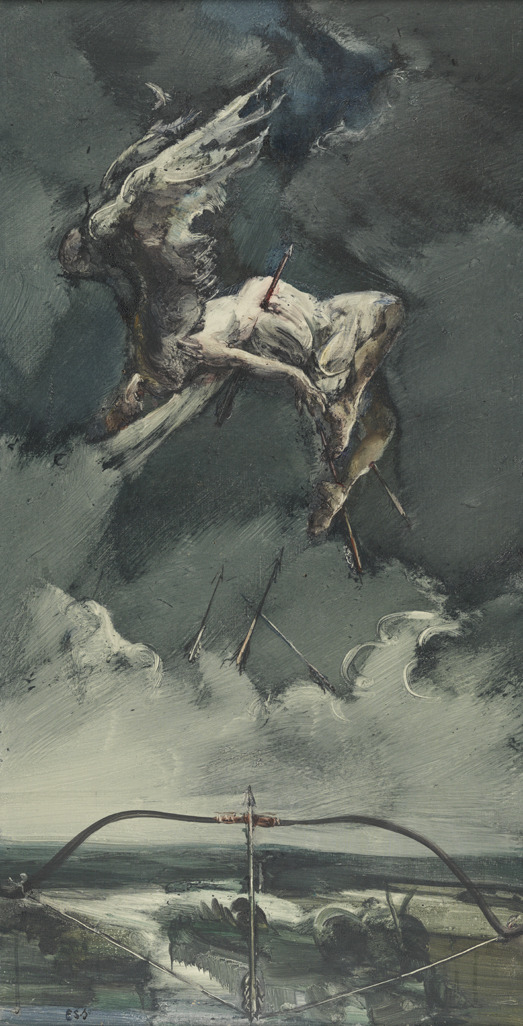
Elizabeth Sparhawk-Jones - Injustice (1944)
163 notes
·
View notes
Text
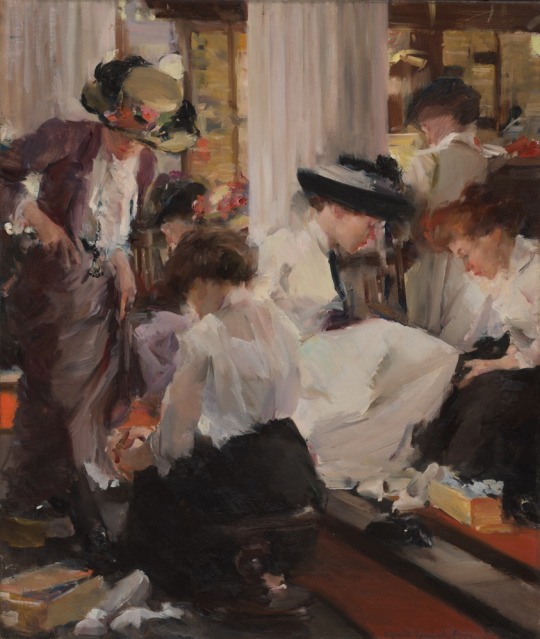
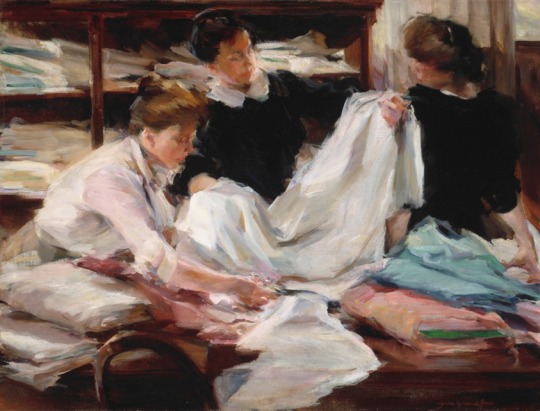
The Shoe Shop (1911)
Shop Girls (1912)
Elizabeth Sparhawk-Jones
2 notes
·
View notes
Text

The Shoe Shop by Elizabeth Sparhawk-Jones
1 note
·
View note
Text
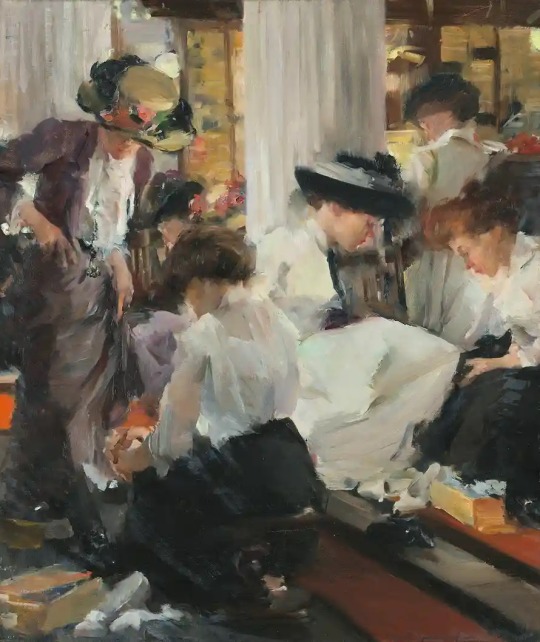
Elizabeth Sparhawk-Jones, The Shoe Shop, 1911. Photograph: Elyse Allen/© Art Resource, New York Scala, Florence
0 notes
Photo

Elizabeth Sparhawk-Jones (American, 1885-1968)
In Rittenhouse Square, ca. 1909
762 notes
·
View notes
Photo

Elizabeth Sparhawk-Jones (1885-1968, American) ~ The Dreamer, 1942.
@ Delaware Art Museum
12 notes
·
View notes
Photo
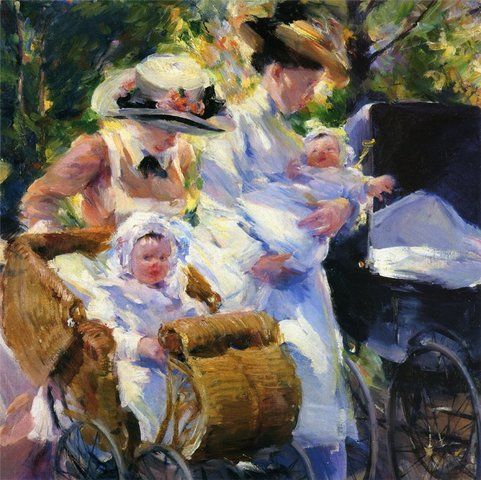
Elizabeth Sparhawk
6 notes
·
View notes
Photo

Elizabeth Sparhawk-Jones (American, 1885-1968), Woman with Fish, 1936-37. Oil on canvas, 18 3/16 x 15 in.
139 notes
·
View notes
Text

Elizabeth Sparhawk-Jones - Woman with Fish (1936-19937)
101 notes
·
View notes
Text

Elizabeth Sparhawk-Jones - "The Shoe Shop" [detail], 1911. Oil on canvas. The Art Institute Of Chicago.
#Elizabeth Sparhawk-Jones#Art#Art History#Sparhawk-Jones#Women In Art#Women Artists#Female Artists#Painting#Art Hatred#Detail#AIC#Paint#My Photography#Art Museum#The Art Institute Of Chicago#Shoe Shop#Shoes
4 notes
·
View notes
Photo

“The dreamer” (c. 1942) by American artist Elizabeth Sparhawk-Jones (1885-1968).
6 notes
·
View notes

